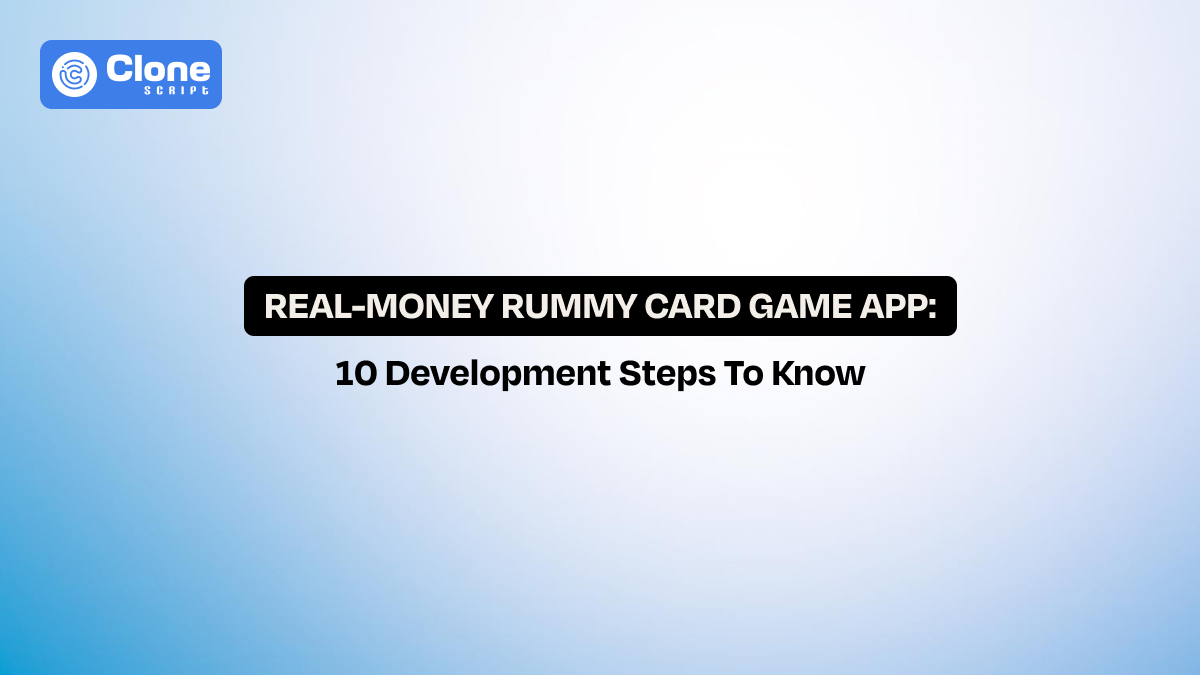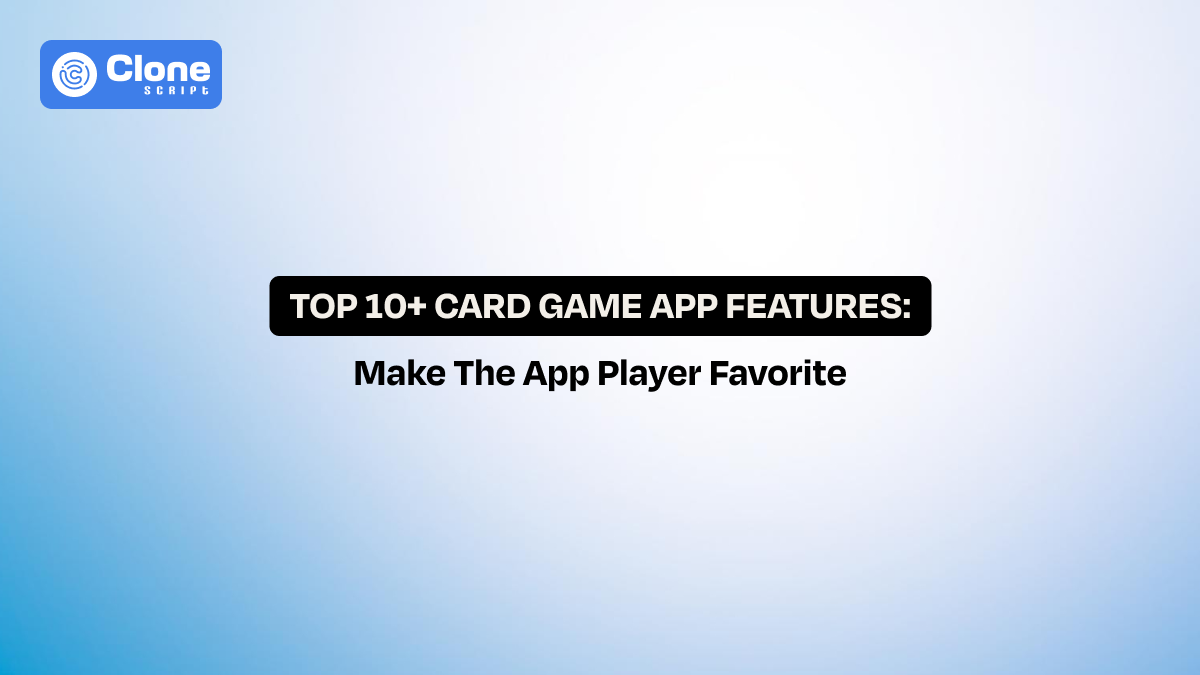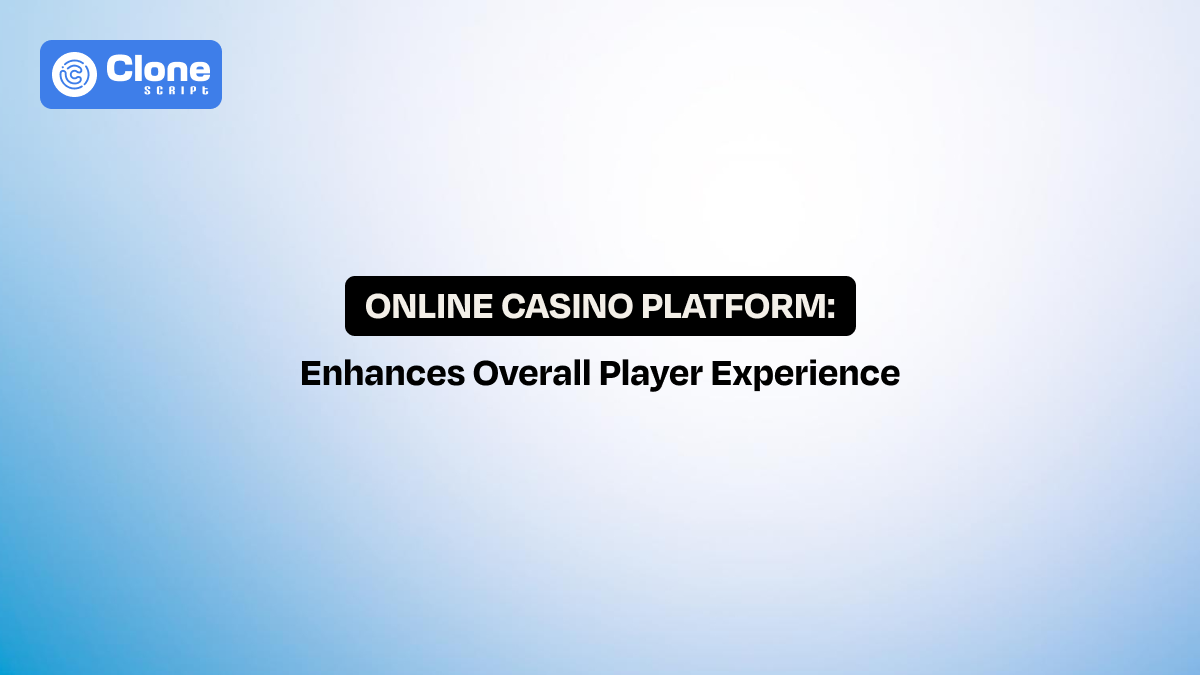How to Build a Real-Money Rummy Card Game App in 10 Easy Steps
The rise of real-money rummy card game apps has redefined how traditional card games are played in the digital era. Once limited to living rooms and clubs, rummy is now one of the fastest-growing mobile gaming categories worldwide.
-
According to a KPMG report, India’s online skill-gaming market is expected to reach USD 3.5 billion by 2026, with rummy contributing a major share.
-
Globally, card games rank among the top five downloaded mobile game genres, highlighting their universal appeal.
For developers, this growth signals more than just popularity. It represents a profitable opportunity. However, building a secure, scalable, and legally compliant rummy app requires more than coding skills. It demands an understanding of market dynamics, player psychology, legal frameworks, and cutting-edge technology.
This blog explains how to build a real-money rummy app in 8 actionable steps. A developer can get a clear roadmap to design, develop, and scale a successful card game platform.
What is the Rummy Card Game App?
A rummy card game app is a digital platform that recreates the traditional rummy experience on smartphones and desktops. It allows players to participate in multiple variants, such as Points, Pool, and Deals Rummy, either casually or in real-money tournaments.
-
These apps integrate intuitive interfaces, real-time multiplayer gameplay, and secure payment systems. This makes rummy accessible anytime, anywhere.
Unlike casual card games, rummy apps are designed with advanced systems for fairness, compliance, and scalability. It is suitable for both entertainment and competitive gaming.
What makes a rummy app unique compared to casual card games:
-
Secure Payments: Integrated gateways for safe deposits and withdrawals through UPI, wallets, or cards.
-
Legal Compliance: Adheres to region-specific laws for real-money gaming to maintain trust and safety throughout the gaming.
-
Fraud Detection: Advanced systems have been deployed to prevent bots, collusion, and unfair practices in gameplay.
-
AI Matchmaking: In-built smart algorithms allow pairing players of similar skills for balanced competition to improve engagement.
-
Engaging UI/UX: Smooth navigation, immersive themes, and customizable tables improve retention. This guide helps users come back.
-
Cross-Platform Compatibility: These apps run seamlessly on Android, iOS, and browsers for maximum reach.
-
Scalable Backend: Robust software architecture supports thousands of concurrent players during peak tournaments.
-
Multilingual Support: Multilingual support expands the user base by catering to diverse regions and audiences.
These elements turn rummy apps into full-fledged gaming ecosystems rather than just digital card games.
Why Are Rummy Card Game Apps So Popular These Days?
Rummy apps have surged in popularity due to a combination of convenience, engagement, and monetization opportunities. Additionally, mobile accessibility is players' favorite and they enjoy games anytime, anywhere, without physical cards or gatherings. This makes rummy an ideal choice for digital entertainment.
5 Key Reasons for Rummy Game Popularity:
-
Real-Money Rewards: Cash tournaments and entry-fee contests attract competitive players. This motivates longer play sessions and repeated engagement.
-
Multiple Game Variants: Points, Pool, and Deals Rummy cater to different skill levels. It keeps gameplay fresh and appealing to a wide audience.
-
Trust and Security: Platforms with RNG-certified shuffling, secure payment gateways, and fraud detection guaranteeing fairness. These elements are crucial for retaining players in real-money apps.
-
Social Interaction: Chat options, leaderboards, and friend invites enhance community engagement. It contributes to more collaborative gameplay.
-
Gamification Features: Daily bonuses, VIP programs, and seasonal tournaments incentivize players to return consistently, boosting retention and revenue.
Market Insight for Rummy Game
India alone has over 100 million active rummy app users, and the online skill-gaming market is projected to reach USD 3.5 billion by 2026. This growth is driven by mobile adoption, secure payment infrastructure, and the cultural affinity for card games. It means developing card games like rummy apps is a profitable and brand-recognized opportunity for developers.
10-step Guide on How to Build a Rummy Card Game
Looking for how to make a real money rummy game for an app and website? Here’s an approach to follow:
Step 1: Do Market Research and Planning.
Before starting rummy app development, thorough market research is essential to know that your app meets player expectations and stays legally compliant.
Focus on these areas when conducting research:
-
Competitor Analysis: Study leading apps like Junglee Rummy, RummyCircle, and MPL. Analyze features, monetization models, and UI/UX to identify market gaps. Through a complete competitor analysis, it can be done.
-
Target Audience: Segment users into casual players, pro gamers, and tournament enthusiasts. Understanding their behavior helps prioritize game variants, difficulty levels, and features.
-
Legal Compliance: Check regulations for real-money rummy apps in each region. For example, as of August 2024, India bans real-money gambling apps. But skill-based rummy, which does not involve monetary things, can be available.
-
Business Model Planning: Prepare a plan on how to operate the rummy app. Decide between rake fees, entry fees, subscriptions, or in-app purchases to align revenue with player preferences.
Takeaways: A solid research phase guides feature selection, tech stack decisions, and UI/UX strategy. It reduces risks and increases the chances of launching a profitable and scalable rummy app.
Step 2: Focus on App Design and UI/UX Strategy.
The app UI/UX design directly impacts player retention and engagement. A modern, intuitive interface allows players can join games, make moves, and interact without any delay.
Following card-playing app design trends can be helpful to complete the tasks:
-
Onboarding Experience: Keep the sign-up and log-in process simple and short. Provide video tutorials, guest play options, and guided practice modes to help new users start quickly.
-
Visual Appeal: Use clean layouts, realistic card animations, and engaging table designs to replicate the feel of a real rummy game.
-
Responsiveness: Check the game app compatibility across Android, iOS, and web platforms for smooth performance. Through the Figma tool, you can design the same designs for different sizes of devices, while in development, the responsive coding practice makes it happen.
-
Accessibility: Don’t be limited to only one niche, but be wider. Offer multiple languages, scalable fonts, and color-blind-friendly palettes to cater to diverse audiences.
Takeaways: Creating app wireframes and prototypes with the help of tools like Figma, Adobe XD, and InVision allows developers to test designs before coding. Prioritizing UI/UX reduces churn, enhances session times, and improves monetization potential. From this, you can make your rummy app more competitive in a crowded market.
Step 3: Essential Features for a Real-Money Rummy App
Building a real-money rummy app requires incorporating features that enhance engagement, security, and monetization. Include the card game app core features as follows:
-
Multiple Game Variants: Add different kinds of game options in the app, from Points Rummy and Pool Rummy to Deals Rummy. After all, the game should cater to players of different skill levels.
-
Secure Login & Authentication: As rummy games handle money-related transactions, players sometimes feel reluctant to share their information. But with the options for log in and sign up via OTP, email, or social media, keep your account safe.
-
Real-Money Gameplay: Integrated wallets and payment gateways allow deposits, withdrawals, and tournament participation without worrying about fund security.
-
AI-Based Matchmaking: To make the card game advanced as of now, the AI system deployment automatically pairs players with similar skill levels for fair competition. This can reduce the load on players to manually match the competitor player.
-
Chat and Social Features: To maintain the entertainment along with gameplay strategy to win the competition, an in-app chat function enables interaction between players. This increases community engagement.
-
Reward & Loyalty Programs: Don’t make the rummy app just a generic time-pass app. Make it entertaining and engaging with daily bonuses, streak rewards, and VIP tiers to increase retention.
-
Anti-Fraud Systems: By deploying detection bots, collusion, or suspicious behavior to maintain transparency in the platform, which is important for a real-money gambling app.
Takeaways: Including these features helps to make a secure, engaging, and monetizable platform. Prioritizing strong backend logic, smooth real-time gameplay, and fair algorithms is important to building a competitive rummy app.
Step 4: Technology Stack and Architecture
Once you decide on the feature to add to the card game app, it’s incomplete until the right technology has not been adopted. After, it’s all about building a scalable, secure, and real-time rummy app.
Card game app recommended technology stack:
-
Frontend: For frontend app development, choose Flutter, React Native, or Swift/Kotlin. A cross-platform development can be done through Flutter as a cost-effective choice. For a native app-like performance, go with Swift for iOS and Kotlin for Android.
-
Backend: Backend system development is very important in rummy game apps. Node.js, Java, or Python (Django/Flask) to handle real-time game logic, matchmaking, and server communication.
-
Database: For storing user profiles, game history, and transaction records, MySQL, PostgreSQL, or MongoDB is becoming the top choice. Pick the one as per your estimate for the users to download the app.
-
Real-Time Communication: Socket.io or Firebase Realtime Database reflects instant moves and updates during multiplayer games. Integrate these third-party tools to make the app more appropriate.
-
Cloud & Hosting: Choose a cloud platform from AWS, Google Cloud, or Azure for scalability, storage, and global deployment. These platforms are very useful to manage the card game app efficiently.
When deploying architecture, follow these considerations:
-
Microservices Architecture: Keep separate modules like payments, matchmaking, and chat for maintainability and scalability.
-
Load Balancing: Check smooth gameplay during peak times and tournaments. If you find any glitch, try to solve it.
-
Security Layers: Includes encryption, secure APIs, and regular audits to protect sensitive user data.
Choosing the best tech stack for rummy game development keeps a robust, scalable, and secure platform ready for real-money gameplay.
Step 5: Security, Fairness, and Compliance
For a real-money rummy app, security and legal compliance are non-negotiable. Players must trust that gameplay is fair and transactions are safe.
Here are the key security measures to follow:
-
Data Encryption: Use SSL/TLS and AES-256 to protect sensitive user and transaction data. Keep note that the user doesn’t want to compromise their privacy anymore.
-
Secure Payment Gateways: Integrate secure payment gateways to the card game app through verified providers like Paytm, Razorpay, or Stripe for deposits and withdrawals.
-
Anti-Fraud Systems: Through the invisible system deployment, detecting bots, bias, and suspicious activity becomes easy to maintain fairness.
For fair gameplay, consider:
-
RNG-Certified Shuffling: Random Number Generators guarantee unbiased card distribution. This is very important when real money is at stake in the competition, and winning chances are based on the algorithm.
-
Advanced Matchmaking: Balancing skill levels for competitive fairness is important to keep the gameplay longer, not for a shorter duration.
Keep maintaining the legal compliance for the card game app:
-
Regional Licensing: Follow state or country-specific regulations for skill-based games. If you find the region not allowed for these kinds of real-money games, then skip those places to access the app for play. This will reduce legal obligation and brand name effect.
-
Responsible Gaming Measures: Implement age verification, self-exclusion, and limits to prevent gambling misuse. This system should be deployed with AI and ML technology to reduce the load on your internal team for handling sensitive data manually.
Takeaways: A secure rummy app development strategy reduces legal risks, builds player trust, and ensures transparency. It is critical for retention, monetization, and long-term success.
Step 6: Payment Integration and Monetization
Just following the security compliance is not enough in card games. The next step is also important. Integrating secure payment gateways and effective monetization models is essential for a real-money rummy app to generate revenue while ensuring smooth gameplay.
For a payment integration, keep an eye on:
-
Multiple Payment Options: Support UPI, credit/debit cards, wallets, and net banking to cater to all users. Also, cryptocurrencies are becoming a top choice for tech-savvy players to start playing rummy.
-
Fast & Secure Transactions: Use PCI-DSS-compliant gateways and encryption to protect user funds. Add the icons and symbols on the website to win their trust and reassure them safe their transactions are secure.
-
Withdrawal Management: A flexible cash-out feature with hand-free verification to maintain retention for a longer participation in different events of the game.
A rummy game app's monetization models are as follows:
-
Rake Fees: Deduct a small percentage from each cash game pot. This will keep the cash flow maintained to operate the app flawlessly.
-
Entry Fees for Tournaments: Charge participation fees for prize-based competitions. It is very useful for longer-duration competitions where players have to test their knowledge.
-
Subscription Plans: Offer VIP tiers for exclusive benefits and rewards. For making more revenue from the rummy card game app, a subscription plan model is becoming the top choice.
-
In-App Purchases: In-app purchase system integration can sell custom avatars, table themes, or game boosters. For additional cash flow generation, this method is very important.
Takeaways: Combining secure payment integration with multiple monetization strategies maximizes revenue, maintains compliance, and enhances user experience. It is making your rummy app both profitable and reliable.
Step 7: Testing, QA, and Bug Fixing
The market research has been done properly, the features are advanced, the tech stack is secure, and the payment handling is well-encrypted, but what aspect measures these elements?
QA & testing can be done.
Thorough testing and quality assurance are important for a rummy app to check smooth gameplay, secure transactions, and reliable performance.
When the app is developed, nearly 99% know these key testing areas:
-
Functional Testing: Verify all features, including login, gameplay, matchmaking, payments, and rewards, that work correctly across devices or not.
-
Performance Testing: Test server load handling, latency, and response times during high-traffic tournaments.
-
Security Testing: Check encryption, payment gateways, and anti-fraud systems for detecting vulnerabilities and issues.
-
Cross-Platform Testing: Check a consistent UI/UX on Android, iOS, and web browsers. This will help to know if a rummy app is working on every device and platform or not.
For bug fixing and optimization in the card game, keep these things in mind:
-
Identify and resolve gameplay glitches, crashes, or UI inconsistencies.
-
Optimize backend performance for real-time multiplayer games.
-
Continuously monitor logs and error reports for a smooth user experience.
Takeaways: Comprehensive QA reduces risks of downtime, improves player trust, and maintains fair and reliable gameplay. Investing in testing guarantees your rummy app runs securely, efficiently, and competitively in the real-money market.
Step 8: Launch Strategy and Pre-Launch Marketing
Once the app is tested well and ready to go live on the Google Play Store, App Store, and web platforms, it’s time to get involved in promotion.
A well-planned launch strategy ensures that your real-money rummy app gains visibility, attracts users, and generates early engagement.
Here are pre-launch marketing tactics to know:
-
Teaser Campaigns: Create social media teasers, countdowns, and sneak peeks to generate excitement. Share it across the channels like Instagram, YouTube, X, Telegram, and Discord.
-
Influencer Partnerships: Collaborate with gaming influencers or streamers to reach potential players quickly. This method is very useful for making your new rummy app famous.
-
Beta Testing: If integration of advanced features like VR integration is required, it’s better to launch a closed beta to gather feedback, fix bugs, and refine UI/UX as needed.
-
Landing Pages & Email Campaigns: Build interest through sign-ups, pre-registrations, and newsletters. Invest your time in a digital marketing strategy and implement it stepwise. Email marketing integration can be a better choice to run campaigns and onboard users.
Card game launch strategy to implement:
-
App Store Optimization (ASO): When making a rummy app live on the app stores like Google Play then consider the best practice of ASO. Optimize title, description, and keywords for Google Play and Apple Store visibility.
-
In-App Events: Host launch tournaments or reward campaigns to drive initial engagement. This can be very important if you want to get the attention of players.
-
Community Building: Create groups, forums, or chats to create early interaction and retention. It will help make a dedicated community for your card game app.
Takeaways: Strategic pre-launch marketing combined with ASO and community engagement ensures higher downloads, better user retention, and a strong foundation for your rummy app’s long-term success.
What is the Cost and Timeline Estimation for Rummy Card Development?
The costs and timeline for rummy card app development vary depending on features, platforms, and security requirements.
-
A basic card game app can cost around $5,000 to $25,000 and takes around 3-4 months for development.
-
The advanced app cost will be $40,000 to $80,0000, and 8-9 development months to be completed.
Here is a brief overview of the factors to decide the cost and timeline:
-
App Complexity: Multiple game variants, real-time multiplayer, and AI matchmaking increase development costs and duration, too.
-
Design & UI/UX: High-quality animations, customizable tables, and smooth navigation require experienced designers. Sometimes, you have to collaborate with top industry professionals who can add more cost.
-
Backend & Security: Managing scalable servers, encrypted transactions, and anti-fraud systems adds to expenses because the backend development demands an in-depth knowledge of programming.
-
Third-Party Integrations: To make a card game app functional, third-party tools like payment gateways, analytics, and push notifications influence the budget.
Takeaways: Early cost and timeline estimates help prioritize features, choose the best tech stack for rummy game development, and manage resources efficiently. This helps the app launch on time and within budget.
What are the Risks and Challenges for Rummy Card Game App Development?
Building a real-money rummy app involves several risks that developers must anticipate to ensure smooth operation and user trust. Here is the list of common challenges:
-
Regulatory Compliance: Varying laws across regions can restrict cash-based gameplay. Non-compliance may result in fines or app removal.
-
Security Threats: Hackers, fraudulent accounts, and payment breaches pose significant risks to both users and the platform.
-
Scalability Issues: Handling thousands of concurrent players during tournaments requires a robust backend infrastructure. Failure to handle it can lead to downtime or lag.
-
User Retention: High competition and an absence of engaging features can result in quick user churn.
-
Technical Bugs: Real-time gameplay, AI matchmaking, and payment systems may experience glitches if not thoroughly tested.
Takeaways: Mitigating these risks requires strong legal guidance, advanced security protocols, scalable architecture, and continuous testing. Proactively addressing these challenges ensures a trustworthy, reliable, and successful rummy app in the competitive market.
Bonus: Post-Launch Growth and Retention Strategies
Launching a real-money rummy app is just the first step; maintaining growth and user retention is crucial for long-term success. Even highly feature-rich apps can see declining engagement without improvised strategies.
Key Strategies for Growth to focus:
-
Regular Updates: Introduce new game variants, seasonal tournaments, table themes, and interactive features to keep gameplay fresh and exciting.
-
Push Notifications & Emails: Send personalized reminders about tournaments, rewards, or promotions to boost daily engagement.
-
Referral Programs: Encourage users to invite friends, rewarding both parties with bonuses or in-game currency to organically grow the user base.
-
Social Media Campaigns: Use Instagram, YouTube, and gaming forums to reach a wider audience and increase visibility.
Retention-focused Features to Implement:
-
Loyalty Programs: Implement VIP tiers, streak-based rewards, and exclusive tournaments to encourage repeat play.
-
Community Engagement: Use in-app chat, leaderboards, and forums to make social interaction and healthy competition.
-
Feedback Loop: Actively collect player feedback to fix issues, add desired features, and improve the overall experience.
Takeaways: Prioritizing post-launch engagement, gamification, and community building helps active users, maximizes monetization, and establishes a strong competitive presence in the real-money card app market.
Conclusion
Nowadays, making a truly unique rummy card game mobile app is very tough, just because of the players’ evolving needs and competition. But with the proper strategy and step-wise implementation, from market research to app testing will be helpful. Also, the cost consideration, along with challenges, involves guides to what to prioritize and what to neglect.
If you need support for a rummy card game app development at any stage, whether it’s a UI design or backend development, we’re here. AllClone Script can handle everything to make a NextGen rummy app now. Contact us.
 BTC - Bitcoin
BTC - Bitcoin
 USDTERC20 - USDT ERC20
USDTERC20 - USDT ERC20
 ETH - Ethereum
ETH - Ethereum
 BNB - Binance
BNB - Binance
 BCH - Bitcoin Cash
BCH - Bitcoin Cash
 DOGE - Dogecoin
DOGE - Dogecoin
 TRX - TRON
TRX - TRON
 USDTTRC20 - USD TRC20
USDTTRC20 - USD TRC20
 LTC - LiteCoin
LTC - LiteCoin







